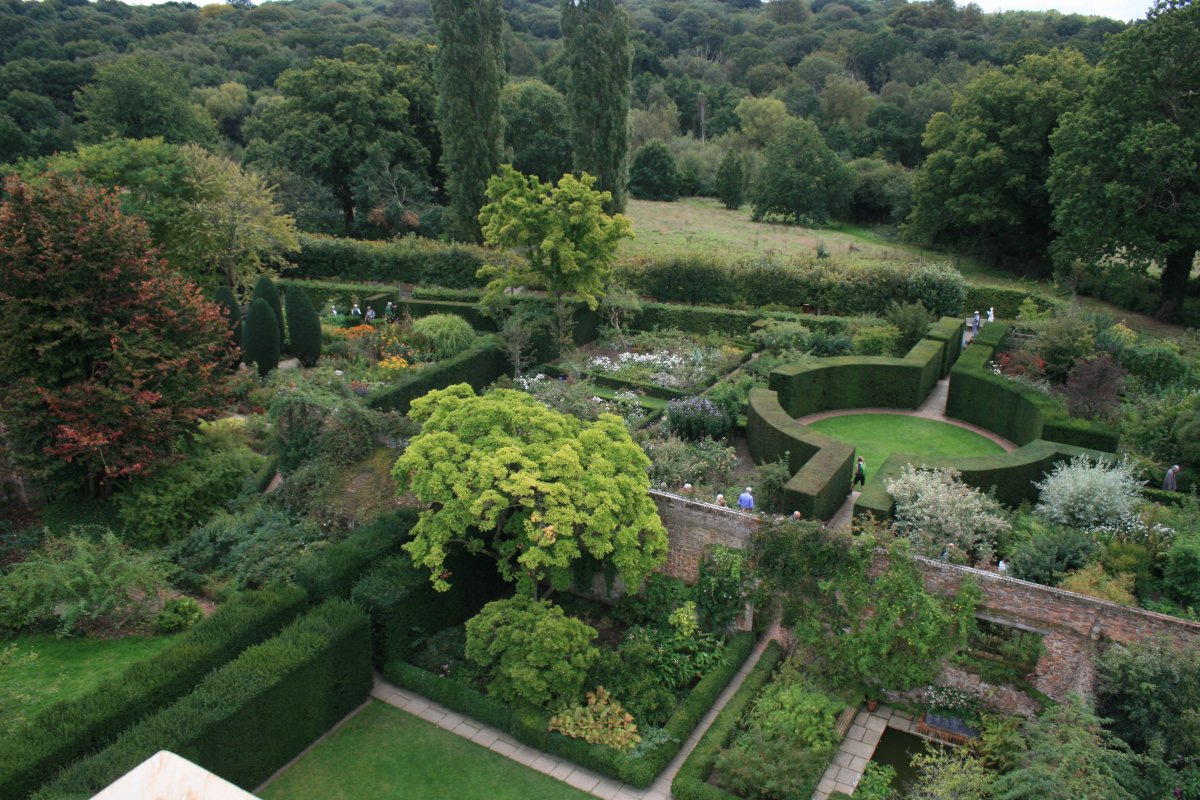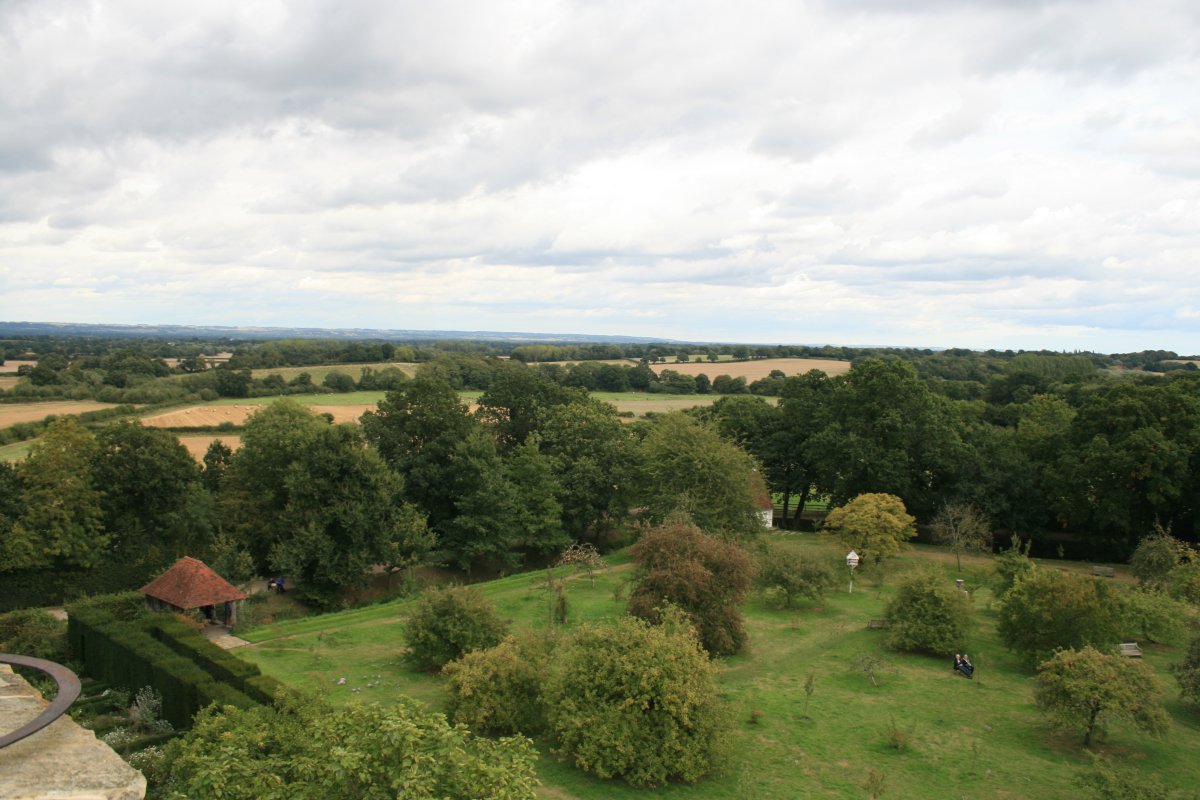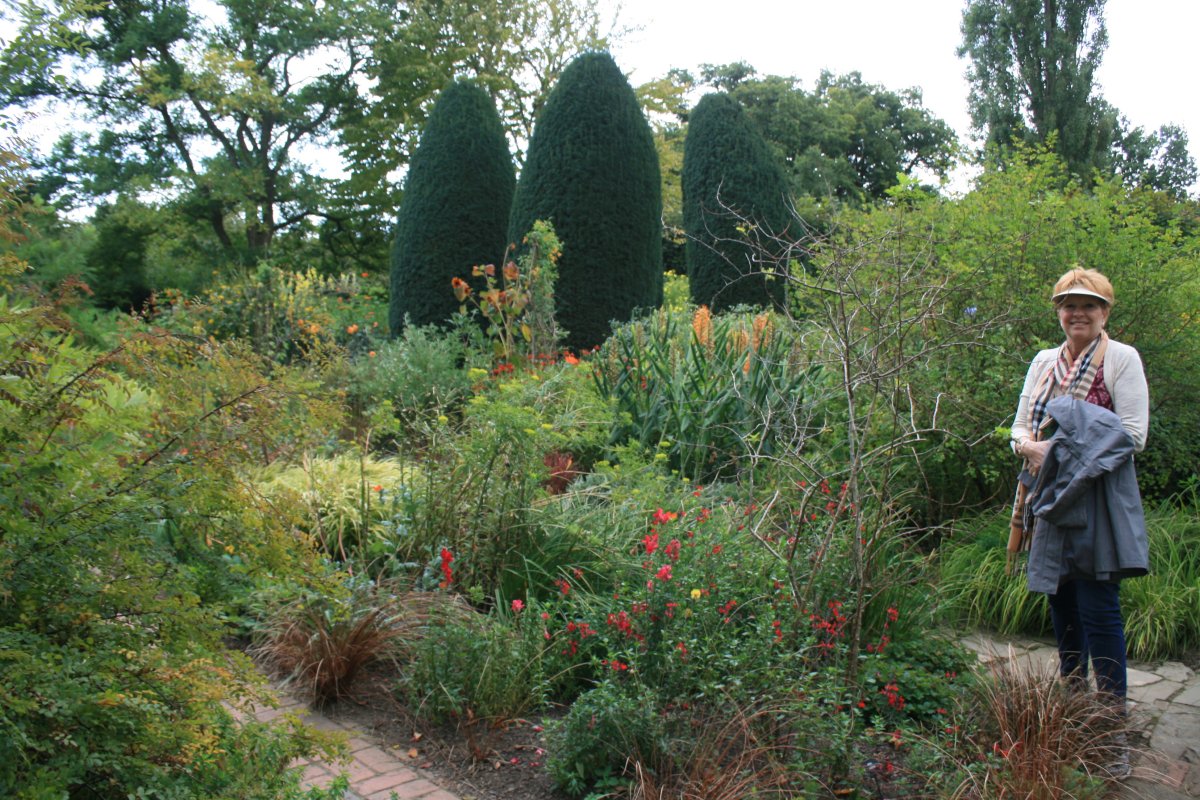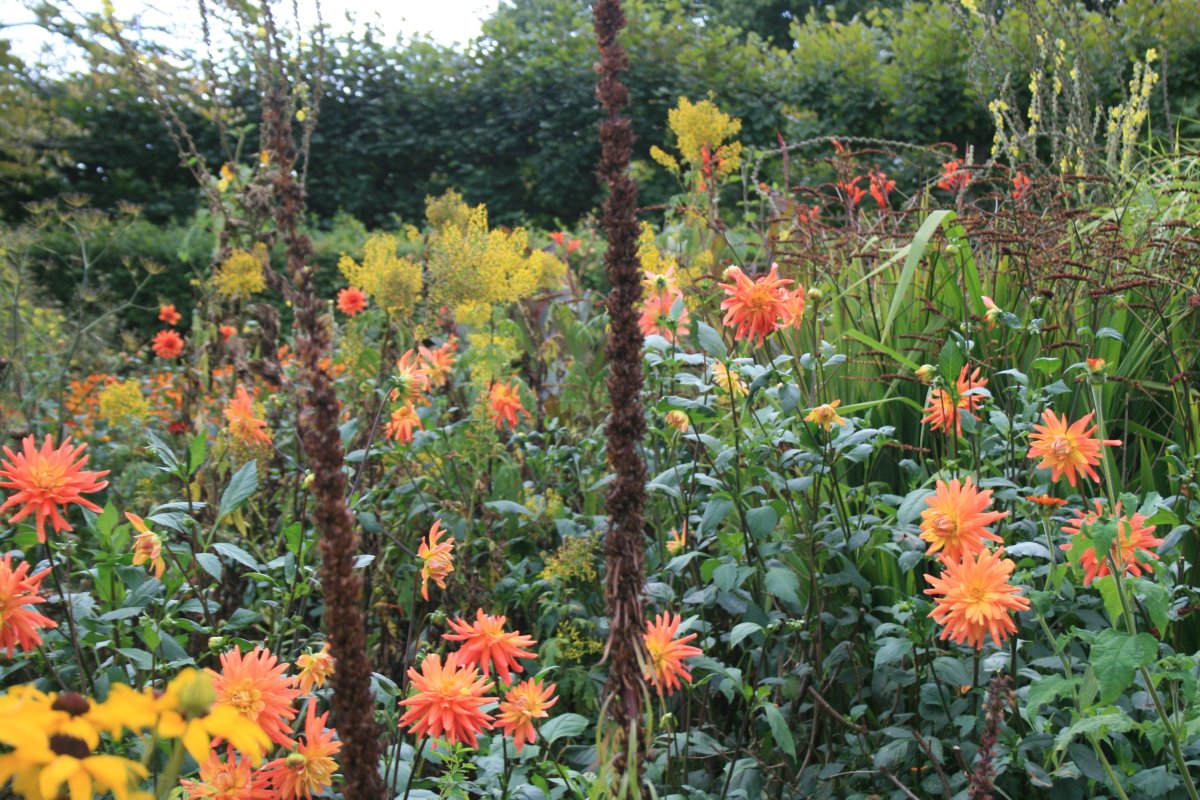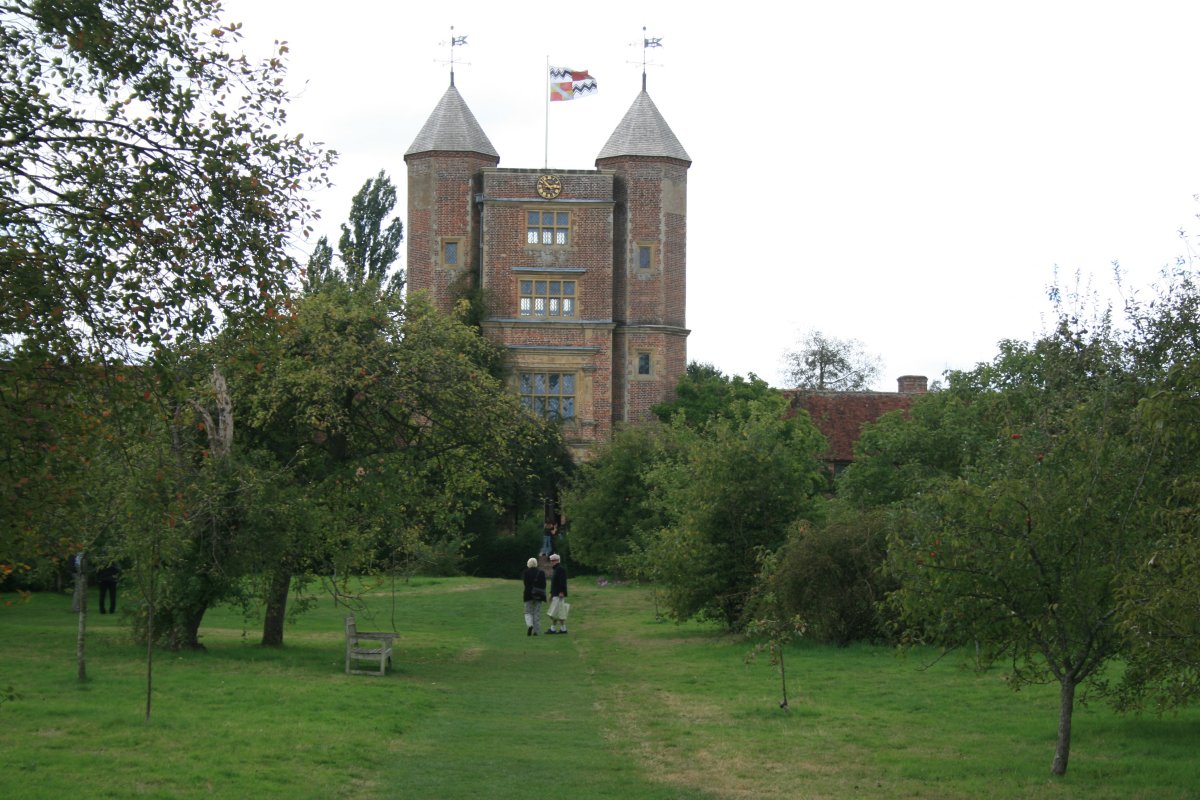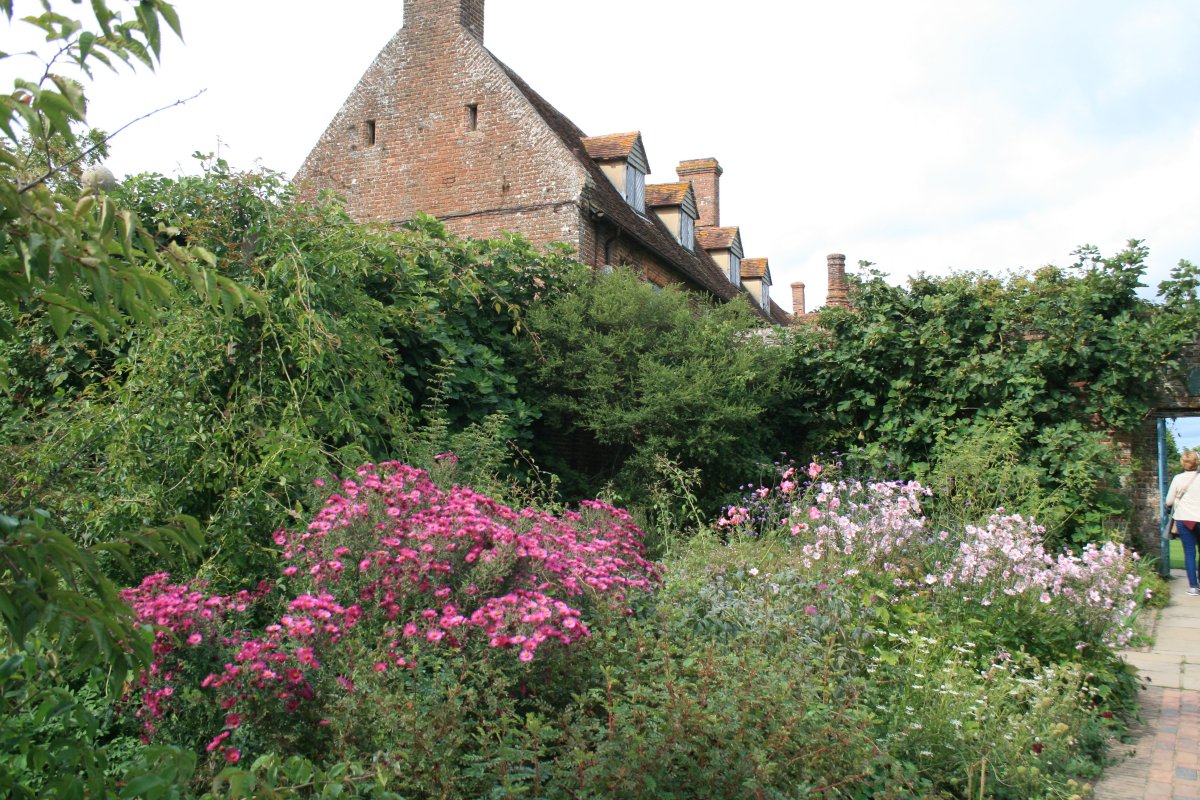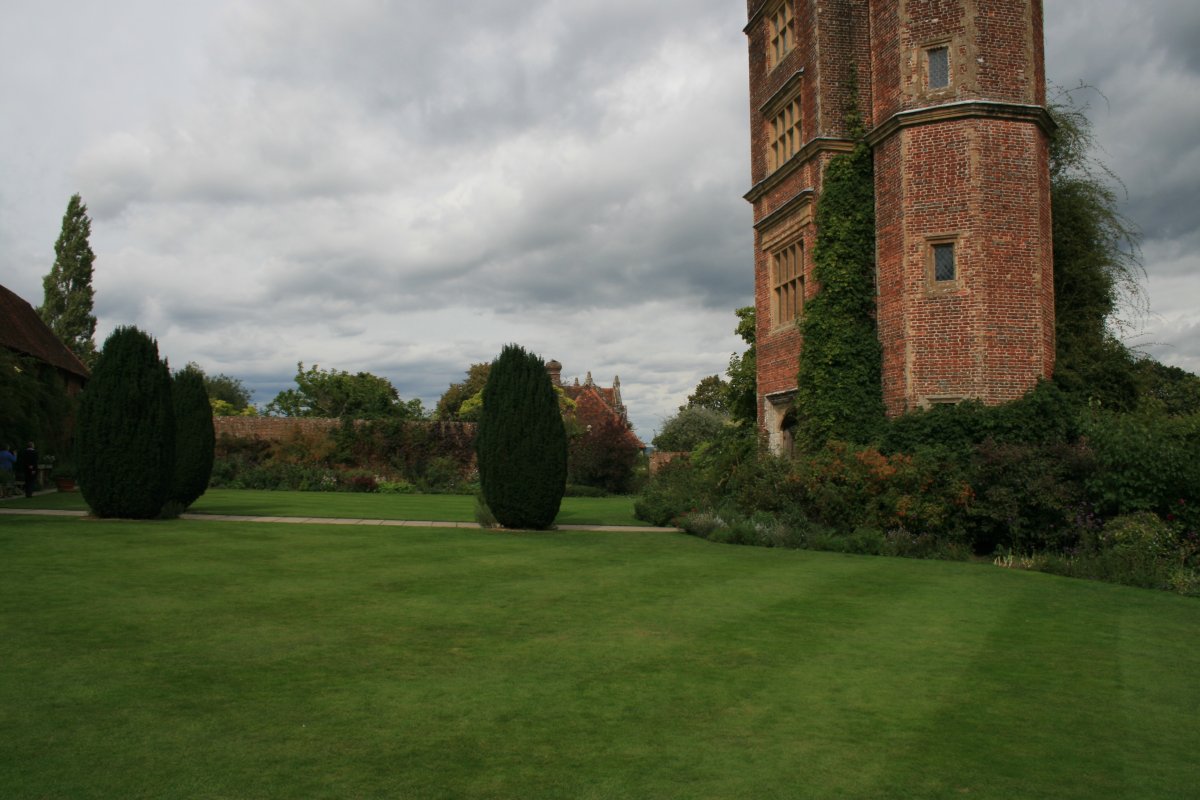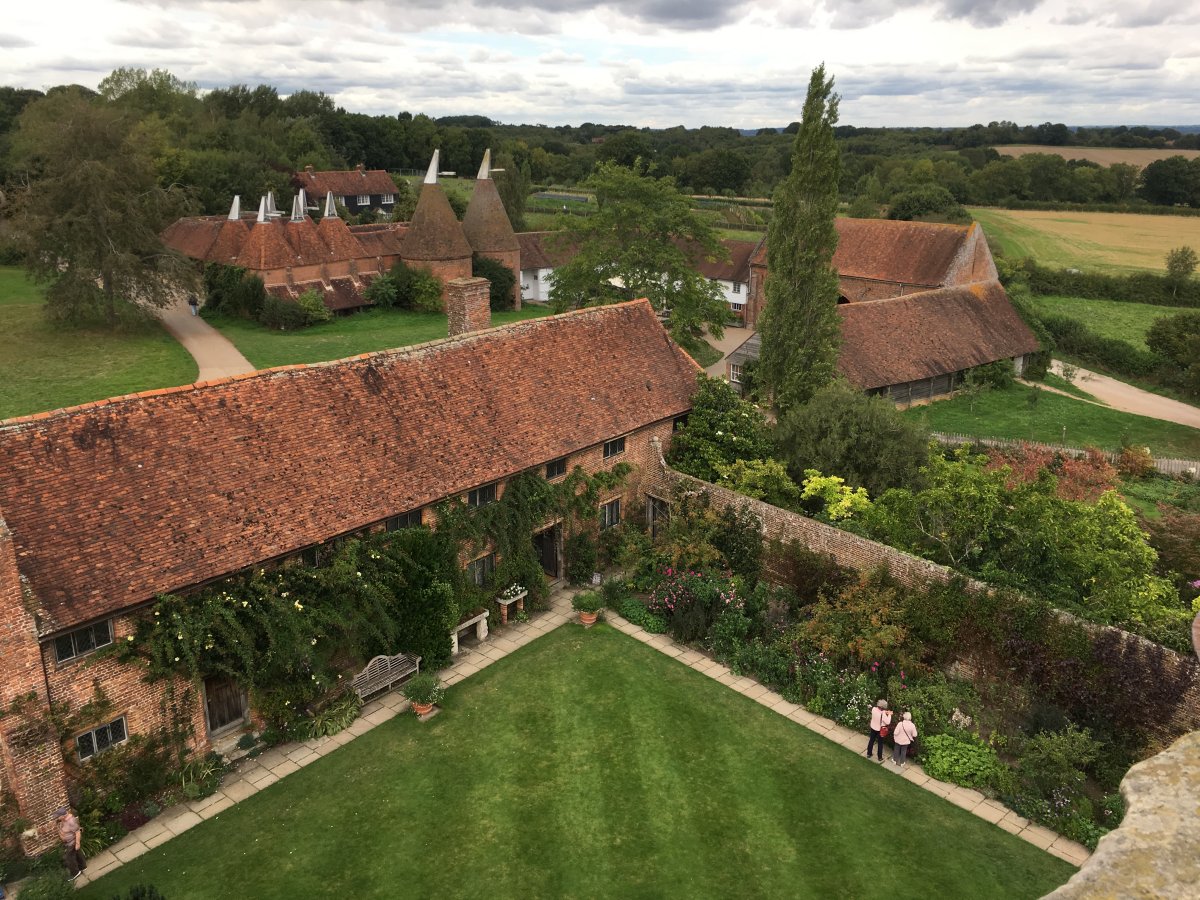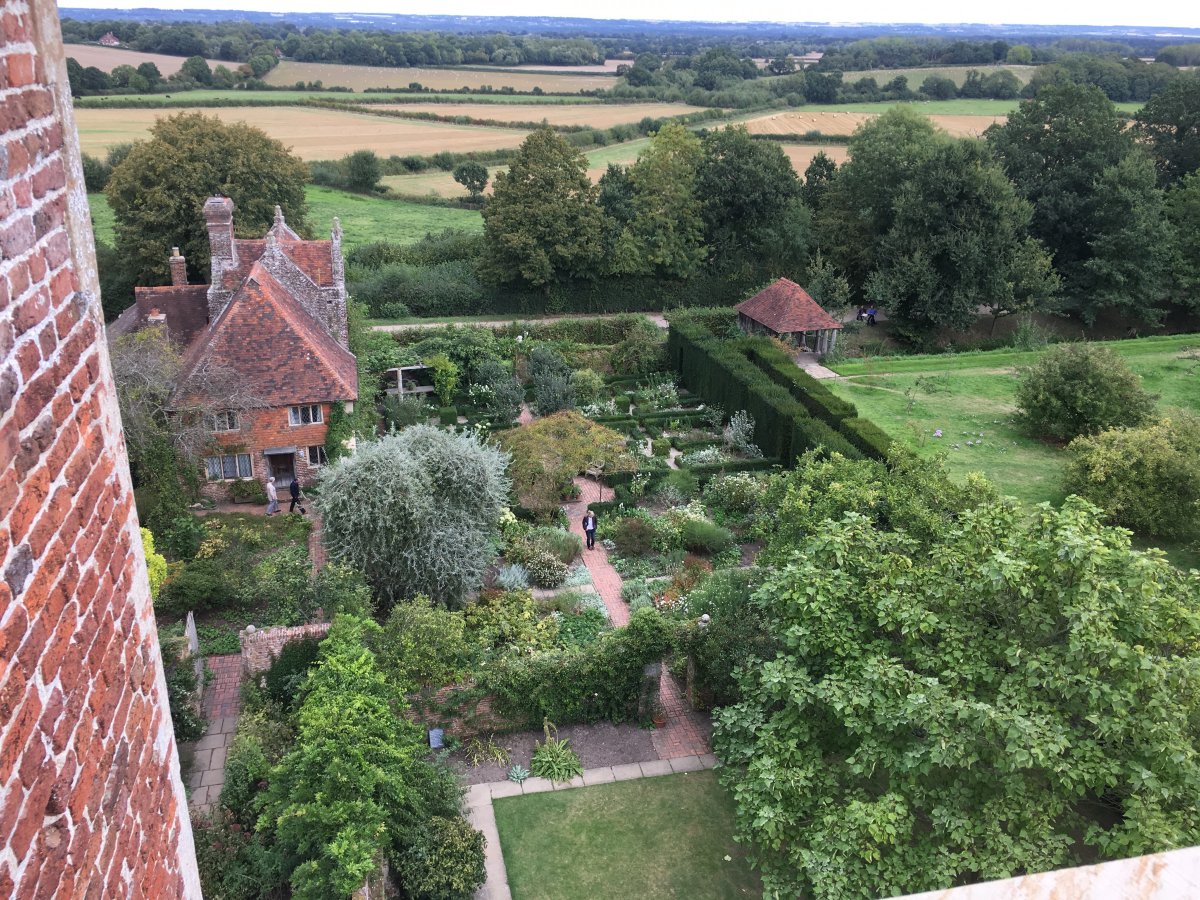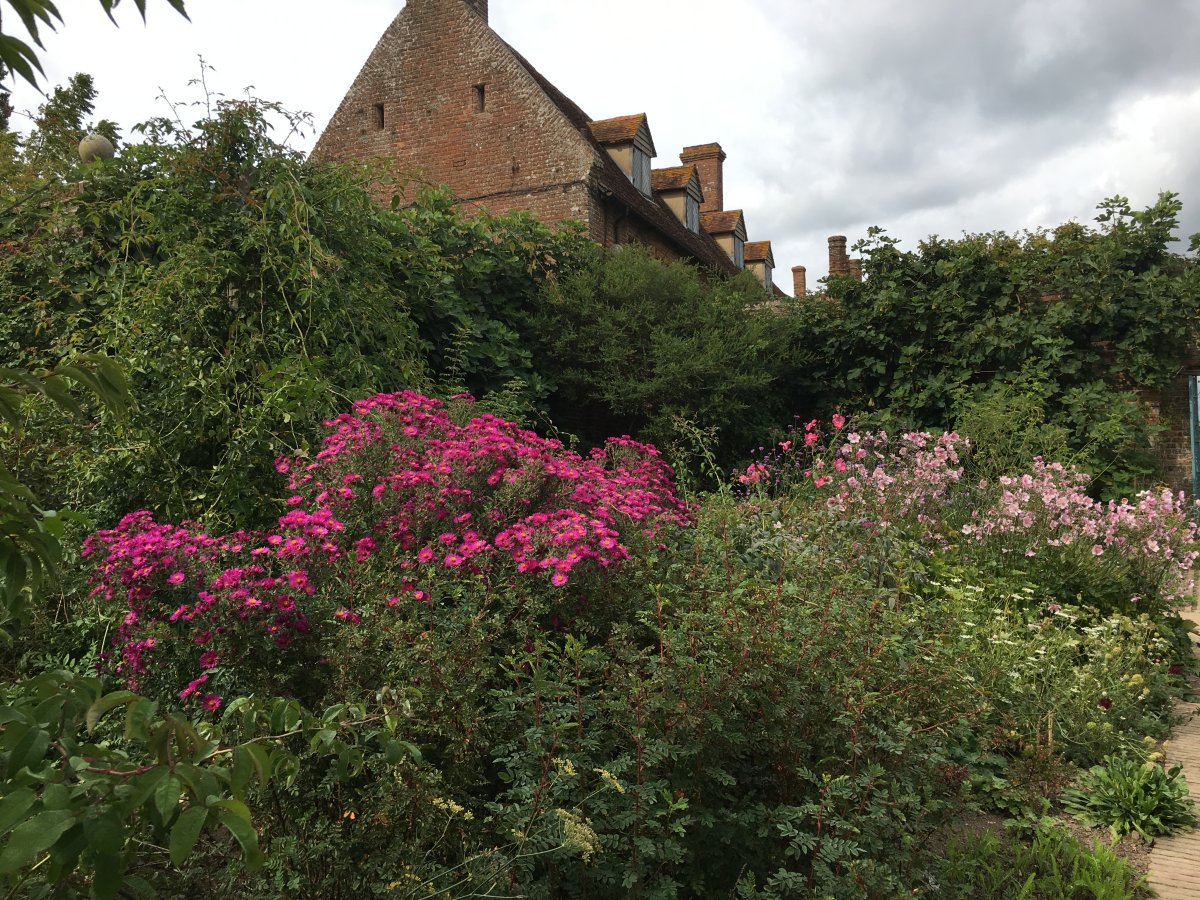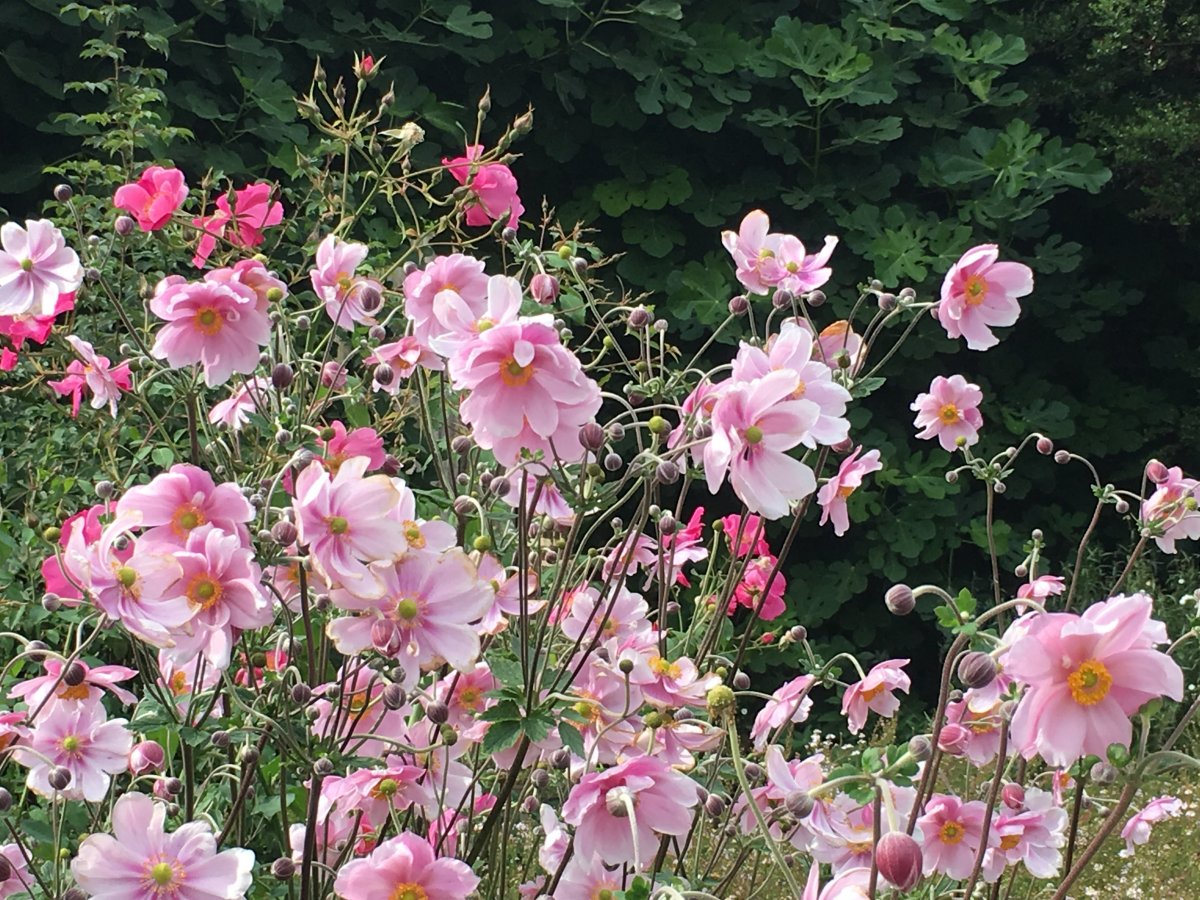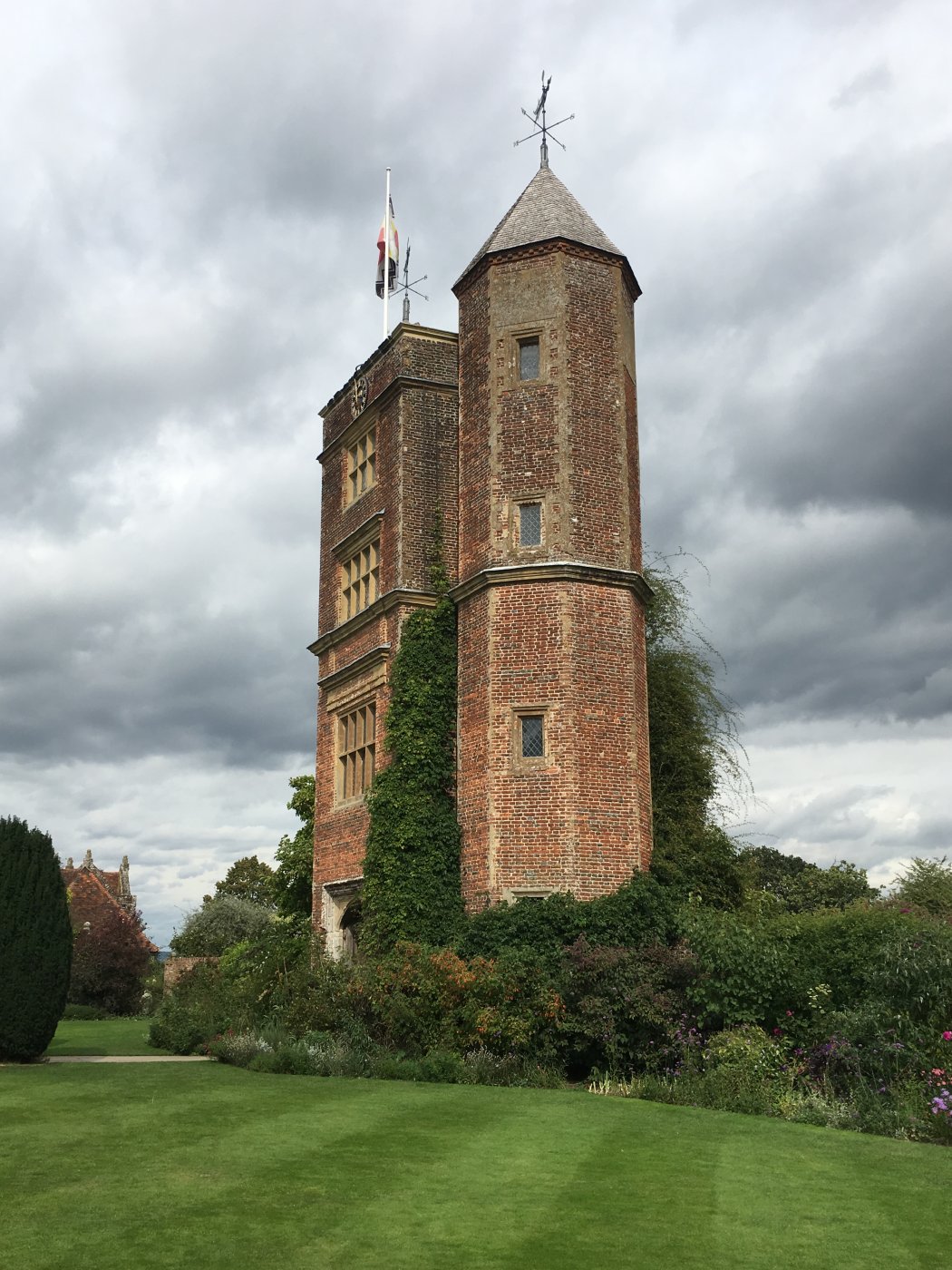England - Sep28 - Sissinghurst Castle Garden
Lynnette and I like visiting beautiful gardens and Sissinghurst Castle Garden at Sissinghurst in the Weald of Kent in England was supposedly one of the best in England. We were not disappointed. It was probably the most beautiful place we visited in England. It's about 40 miles west of Dover but because of the roads took over an hour to get to.
Here we are going through the entrance into the garden.
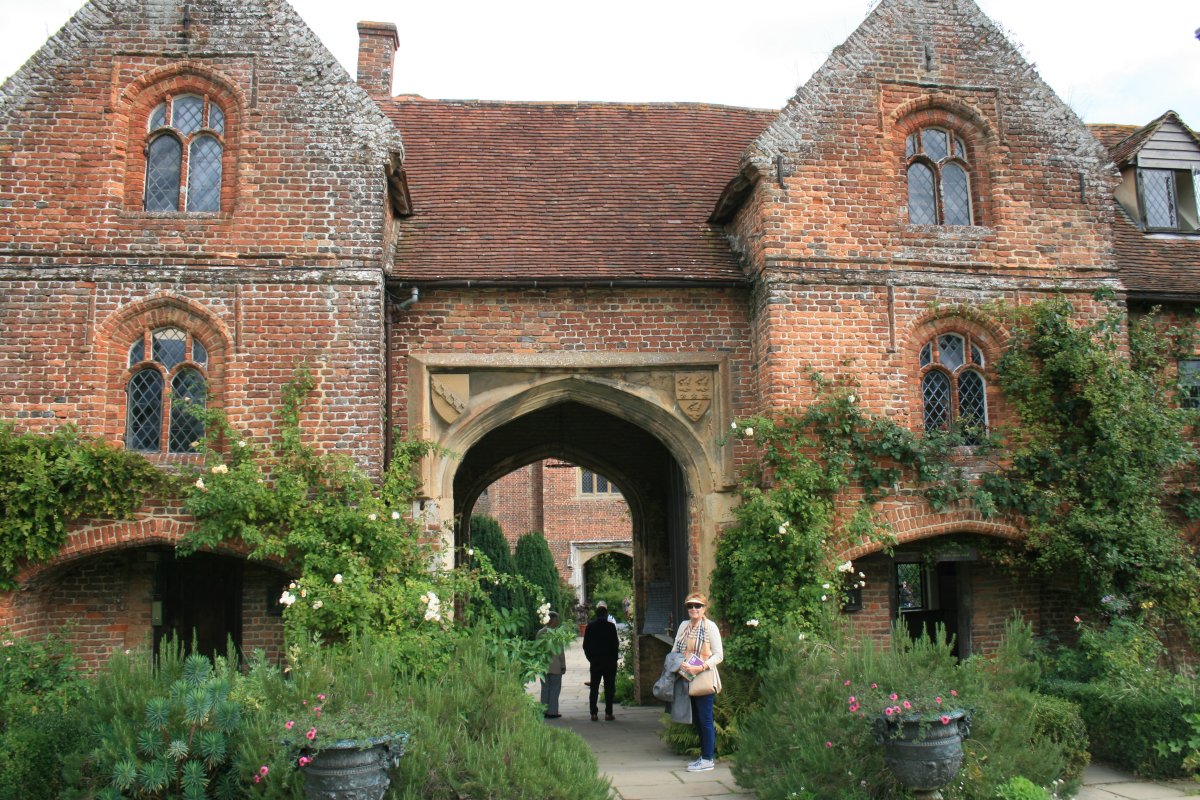

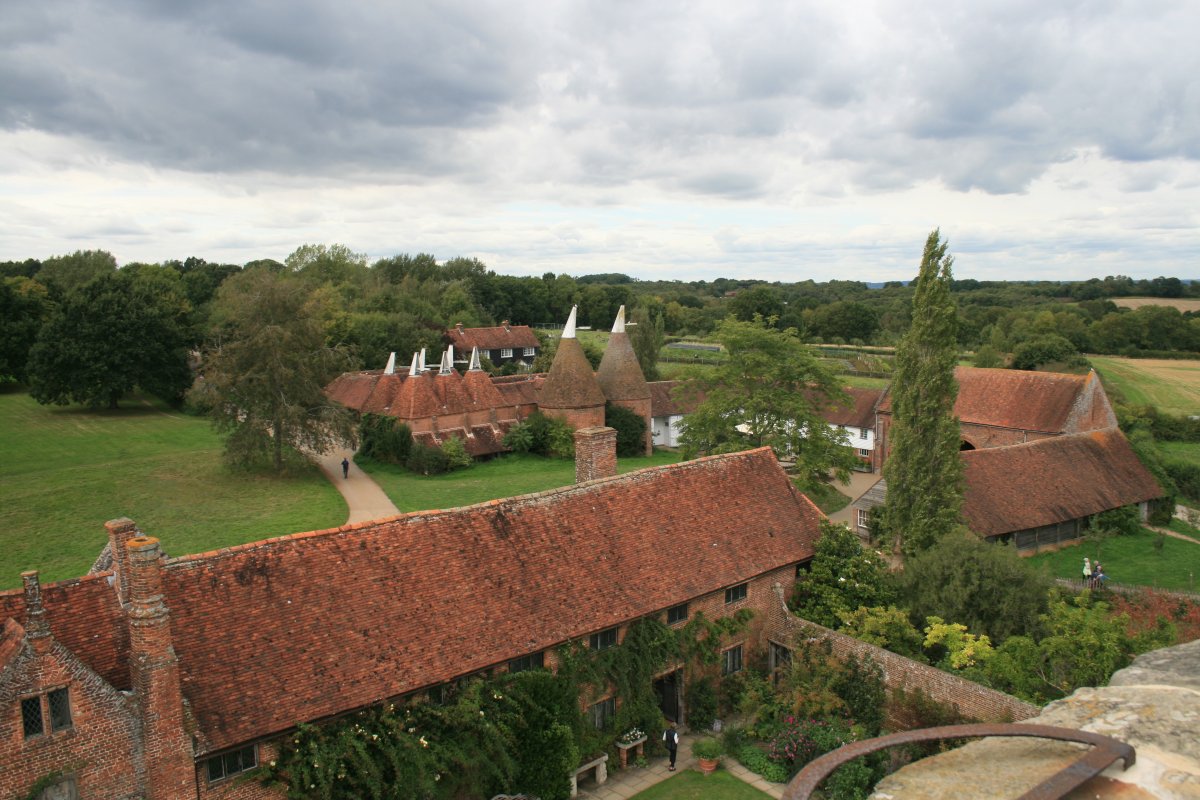
Sissinghurst Castle Garden was created in the early 1930s by Vita Sackville-West, poet and writer, and her husband Harold Nicolson, author and diplomat. It is among the most famous gardens in England. The garden design is based on axial walks that open onto enclosed gardens, and includes an influential all-white garden and an extensive collection of old roses. The landscape of self-contained "garden rooms" within a larger garden was one of the earliest examples of this gardening style. Decades after Sackville-West and Nicolson created "a garden where none was", Sissinghurst remains a major influence on horticultural thought and practice.
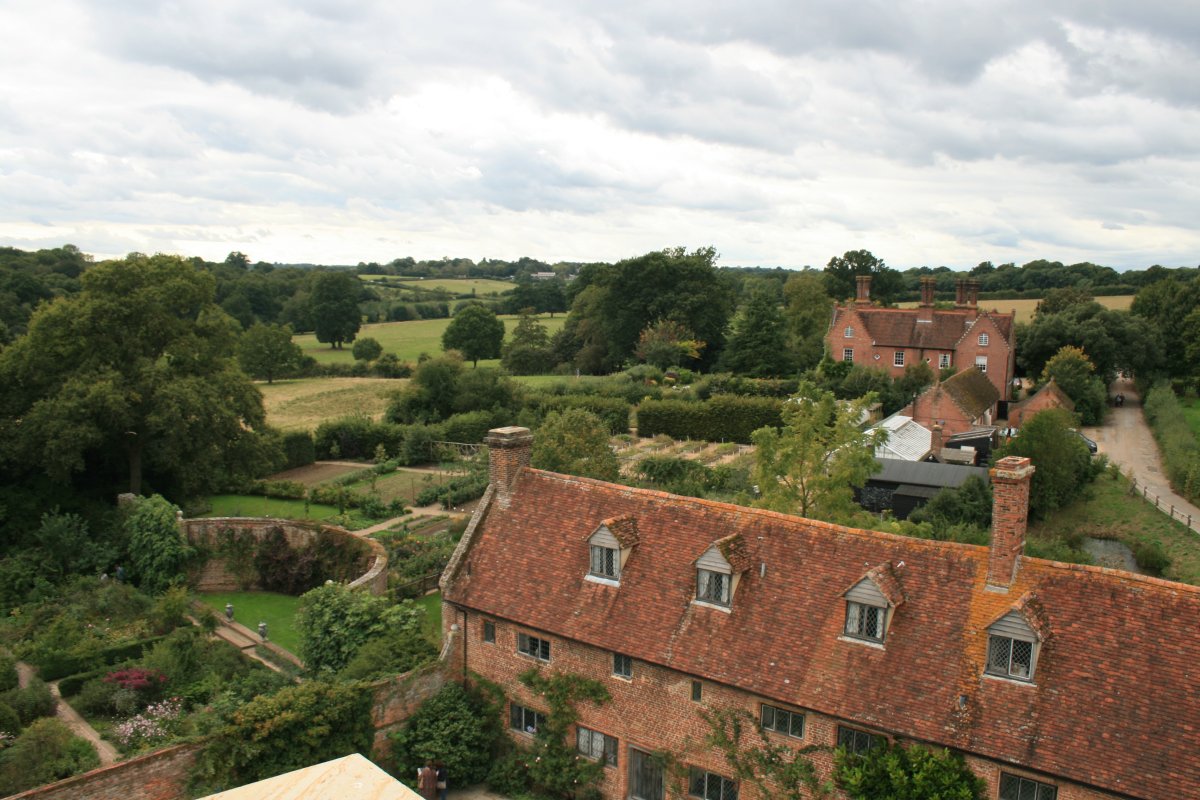
The present-day buildings on the site began as a house built in the 1530s by Sir John Baker and enlarged by him around 1550. In 1554 Sir John's daughter Cecily married Thomas Sackville, 1st Earl of Dorset. Sir John's son Richard inherited the house in 1558 and greatly expanded it. By the 18th century the family's fortunes had waned, and the house, renamed Sissinghurst Castle, was leased to the government to act as a prisoner-of-war camp during the Seven Years' War. The prisoners caused great damage to the house and by the 19th century, following large-scale demolition and use as a workhouse, Sissinghurst had declined to the status of a farmstead.

In 1930, the estate was bought by Vita Sackville-West. She and Nicolson were seeking a new place to live, as their home Long Barn was threatened by development. Sissinghurst held a strong dynastic appeal for Sackville-West: having seen her ancestral home Knole pass out of her hands in 1928, another ancient house of the Sackvilles exerted an irresistible attraction. Over the next thirty years they, and a series of notable head gardeners after them, transformed a farmstead of "squalor and slovenly disorder" into one of the world's most famous gardens. Following Sackville-West's death in 1962, the estate was gifted to the National Trust for Places of Historic Interest or Natural Beauty. It is one of the Trust's most popular properties, with nearly 200,000 visitors in 2017.
